10 Multilingual Website Examples to Inspire You!
Need Inspiration? Explore These 10 Multilingual Website Examples
With many major retailers and companies expanding to countries across the globe, the need for multilingual websites is on the rise.
Not to mention multiculturalism, cross-border e-commerce, overseas and international hiring, international travel, business expansion, and globalization.
These are all reasons behind the growing number of multi-language websites.
In this article, we’re going to focus on the benefits of website translation and highlight 10 examples of multilingual websites and what makes them outshine their peers.
Benefits of multilingual websites
But when and why should companies and businesses consider translating their website into more than one language?
Here are the 4 main reasons:
1) Attracting a wider audience
A multi-language website means a larger audience, whether in the same country or across several countries.
Consider Arab nations such as Egypt or the United Arab Emirates (UAE) or Saudi Arabia. Although the native language for all three is Arabic, there are many English speakers including citizens and expatriates.
Similarly, there are many Spanish speakers in the United States.
If you’re expanding to another country, you’ll definitely want to include that country’s language in your language options. Otherwise, you risk reducing your customer base.
2) Increasing global sales
With the advent of cross-border selling, you may find that many of your customers aren’t from the same country where you’re operating from.
Examine your top five traffic sources using Google Analytics. Is one of them a country that doesn’t speak the language on your website?
If yes, you should consider translating your site into that language to increase traffic and sales.
3) Bigger search engine boost
Multilingual websites can appear and rank on search engines in multiple languages.
By translating and localizing your site and product pages, you can enhance your appearance on search engine results pages (SERPs).
This will require some SEO translation to ensure your products rank in a different language.
4) More satisfied customers
Data has shown that customers prefer to read content in their own language – even if that content is of poor quality. Similarly, buyers are more likely to buy from a website that speaks their language over one that doesn’t.
Of course, we’re not encouraging you to provide a poor-quality website translation to customers. This can heavily hurt your business.
If you’re looking to turn your e-commerce website into a multilingual one, consider hiring an e-commerce translation agency.
Request A FREE Translation Cost Estimate!
Click the below button and request a free price quote for translation services—no commitment on your side.
Here are 10 multilingual website examples
We’ve covered the main reasons to translate your website and when to start doing that.
Now, let’s explore some multilingual website examples from various sectors across the globe and what makes them unique.
It’s worth mentioning that the companies mentioned on this list aren’t arranged in any specific order.
1. Ikea
Swedish ready-to-assemble furniture maker Ikea supports 26 languages.
But that’s not the only thing. Ikea’s website is designed to suit its different audiences’ differing tastes. Its Swedish version shows a minimalistic design whereas its UK version offers bright colors and doesn’t mention pricing.
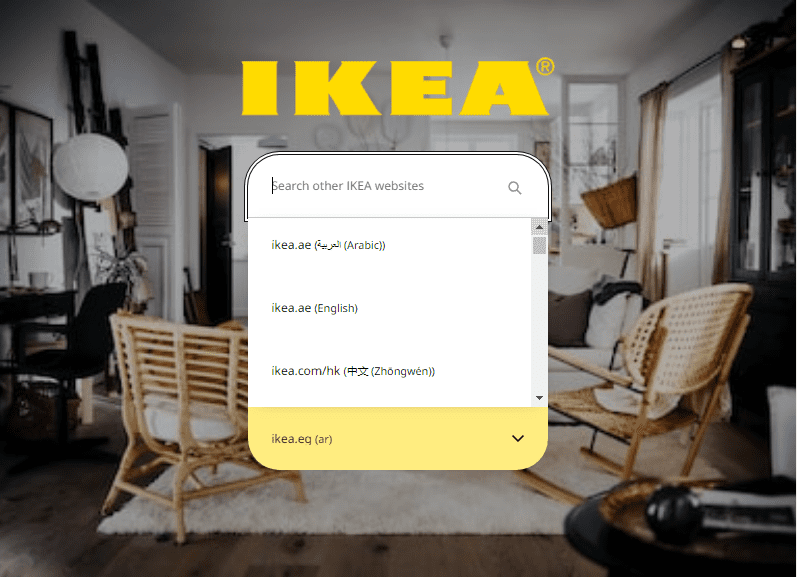
What makes Ikea’s website unique?
2. Nike
American athletics wear Nike is another multilingual website example that not only offers a variety of languages but also combines marketing and presentation.
However, their language settings aren’t as clear as other companies’ settings. Bound by location, Nike’s language option is located at the far bottom of the page.
So if you’re in the United States and your English isn’t great, you may struggle a bit.
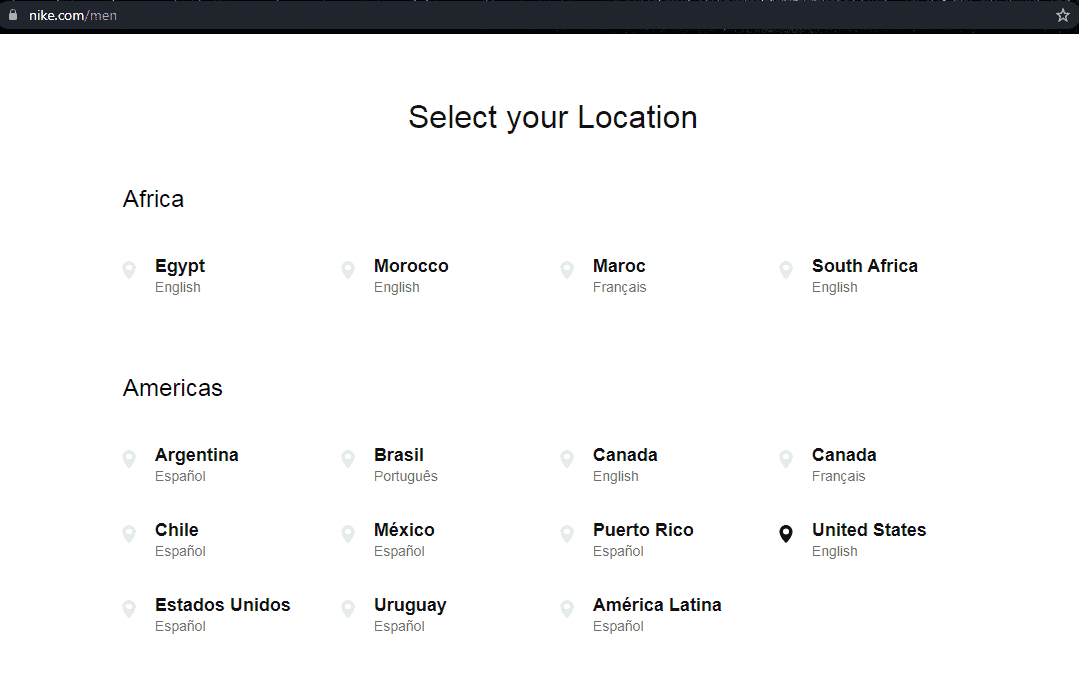
What makes Nike’s website unique?
If you’re looking at the UK version, the site opens with a shoe launch, whereas if you open the Japanese version, the focus is on their models, not their products.
3. Apple
This list of multilingual website examples cannot be free of this brand: Apple.
Like Nike, its language settings are at the bottom and location-based. But unlike Nike, Apple displays a language option at the top when you open the site.
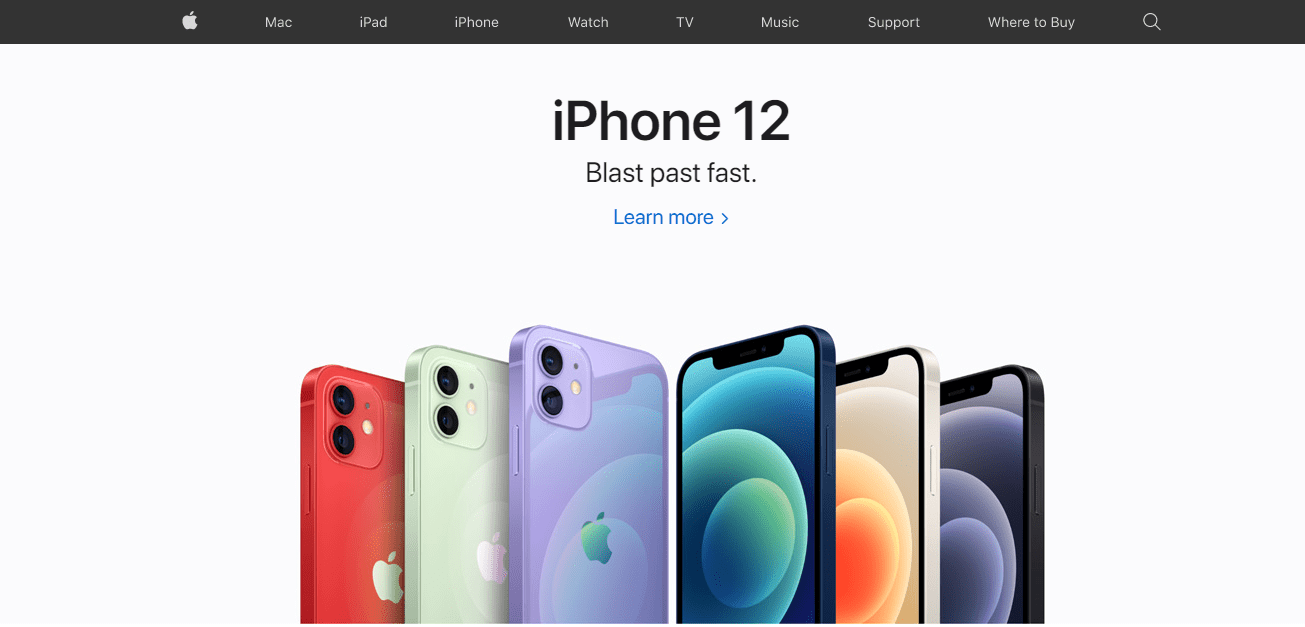
What makes Apple’s website unique?
4. Coca-Cola
The Coca-Cola Company’s website opens with social responsibility regardless of where you’re viewing from. Not its products. And that doesn’t happen often.
Looking at the language options, you’ll find the listing by region and country along with languages in the same region.
For example, Coca-Cola has two options for the Middle East, namely English, and Arabic. That said, it’s harder to determine how many languages exactly Coca-Cola’s websites support.
What makes Coca-Cola’s website unique?
5. Jumia
E-commerce retailer Jumia automatically opens its homepage to the local language of your location. That said, it offers several languages across several countries.
In almost every market where it operates, Jumia allows customers to view its products in two languages with the exception of Senegal (French) and Nigeria and Kenya (English).
What makes Jumia’s website unique?
6. Netflix
One of the reasons Netflix has such a wide viewership and is constantly growing is because of its bilingual websites.
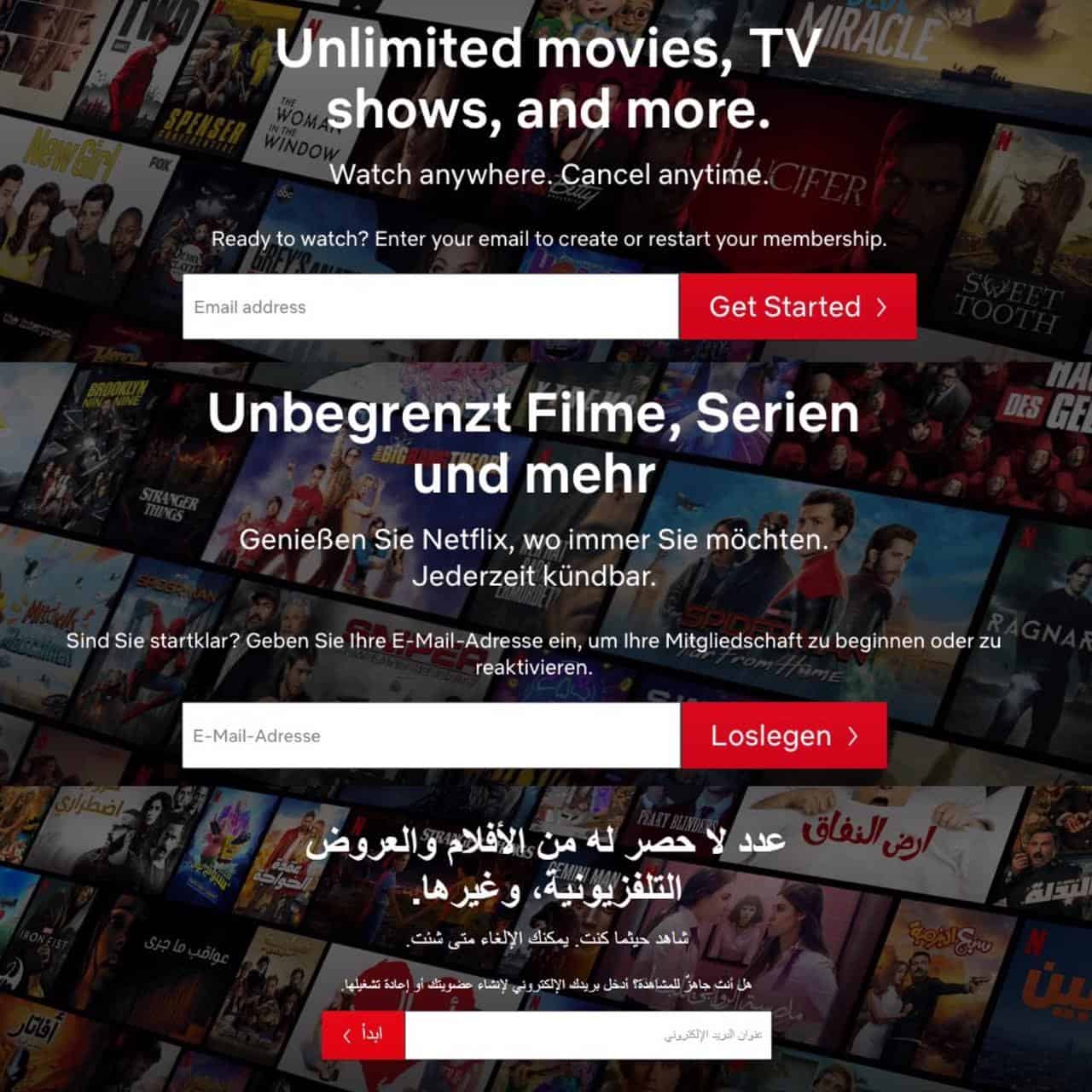
Netflix’s homepage has the same format in every country. It offers English and the local language. So if you’re accessing Netflix from Germany, you can view the site in English or German.
What makes Netflix’s website unique?
7. Mercedes-Benz
The German carmaker’s glossy international site is available in English and German. But upon scrolling down, they give you the option to go to your local Mercedez-Benz site.
For every site, there are two languages offered.
What makes Mercedes-Benz’s website unique?
It’s worth mentioning that despite the translation, the international site’s two languages have the same content format. But between local and international, the arrangement of Mercedez-Benz’s websites differs completely.
8. The WHO
Like all United Nations (UN) websites, the World Health Organization (WHO) is available in six languages. These are English, Arabic, Chinese, Russian, French, and Spanish.
Opening its homepage allows you to pick one of the languages listed, whereas switching to a region offers you a few options.
Selecting Europe as my region shows me that I can read the content in English, French, German, and Russian. Meanwhile, selecting Africa gives me English, French, and – surprisingly – Portuguese.
What makes The WHO’s website unique?
UN websites are considered among the earliest examples of multilingual websites.
9. EgyptAir
While we’ve selected EgyptAir for this list, you’ll find that most airlines’ websites are available in multiple languages.
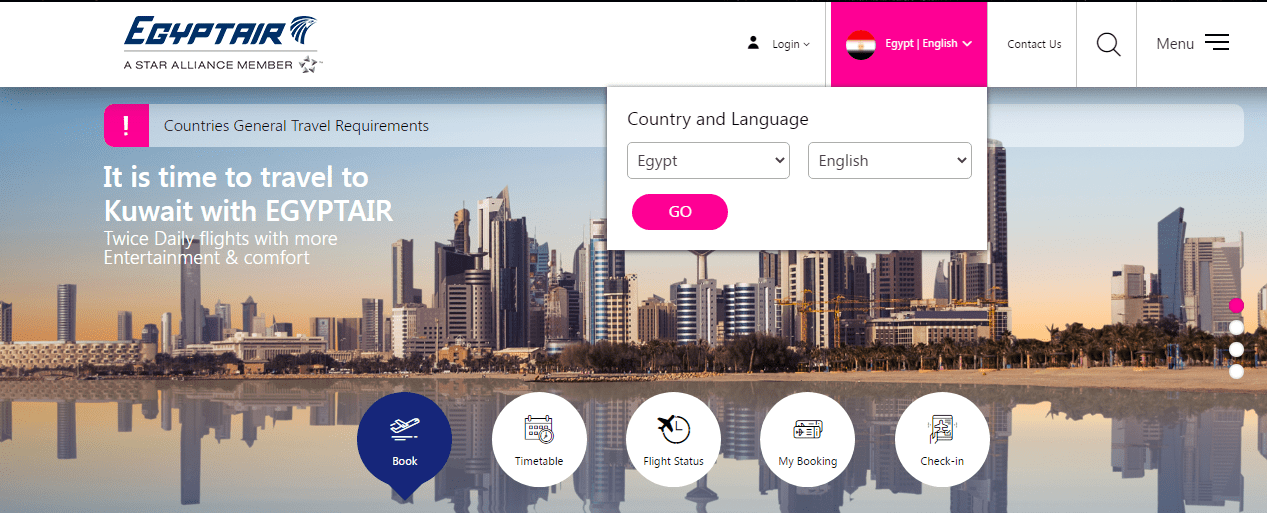
And it’s a logical move because they cater to a global audience. Like several examples on this list, EgyptAir offers its customers dual language options for every country.
What makes EgyptAir’s website unique?
10. Dubai Police
Last but not least, is the Dubai Police website. Its design, user interface, and user experience are quite different from many other government agency websites.
And while anything Police-related tends to provoke fear, the Dubai Police website is colourful and reassuring for visitors. Added to its catchy web design, Dubai Police is a bilingual site available in English and Arabic.
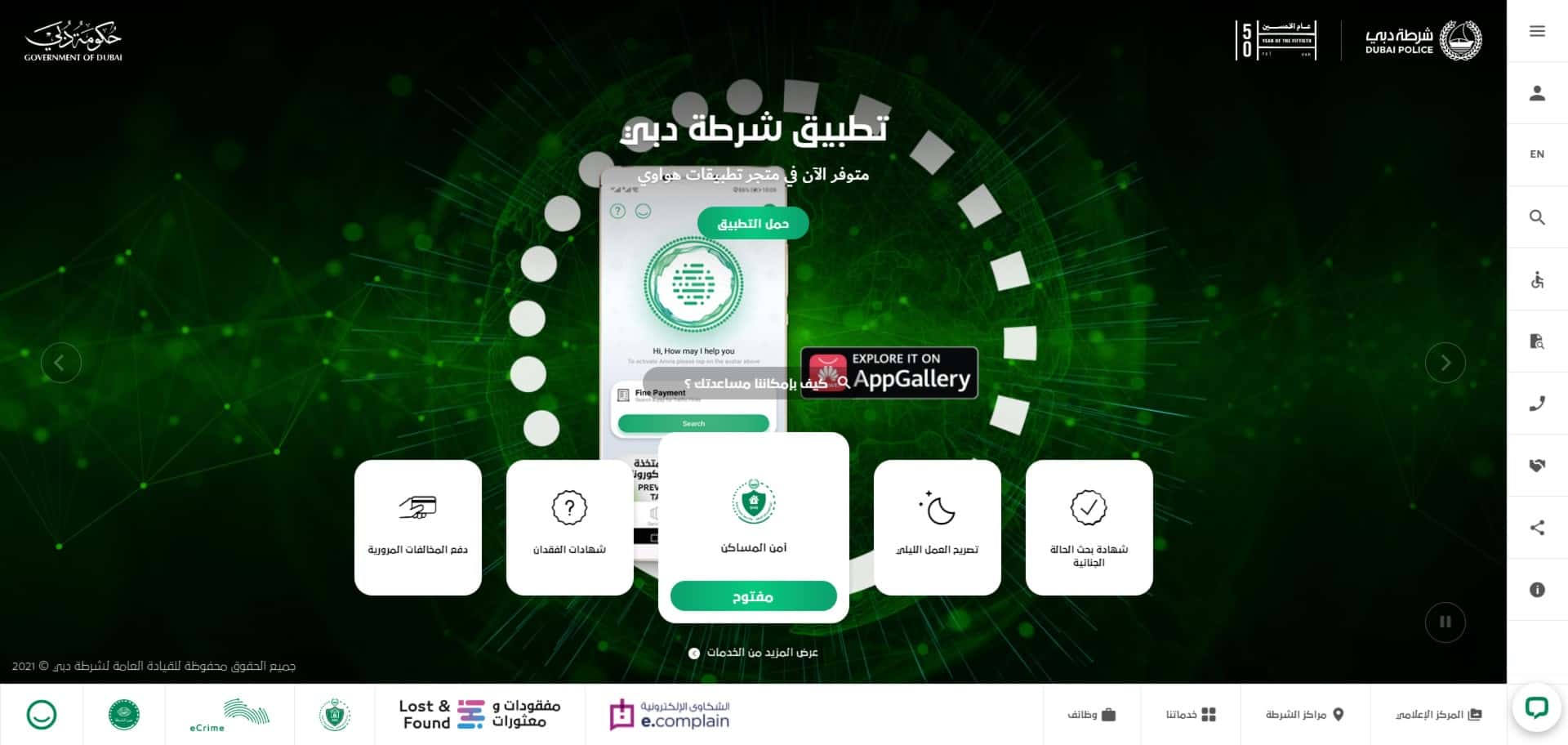
What makes the Dubai Police website unique?
Unlike many government agency websites, the Dubai Police site uses simple language that makes it easy for the reader to find what they are looking for.
Other government agency websites tend to be harder to navigate with some having weak translations.
When to translate your website
Now that you’ve seen multilingual website examples and learned the benefits behind website translation, when should you consider adding a new language?
There are many answers to this question. But here are the main ones:
– If you’re about to start selling products or services in a country that doesn’t speak your language.
– If you begin targeting a new segment that speaks a different language within the same country.
For example, in some North African countries, the top two languages used are Arabic and French. Also, if you’re not planning to sell all your products in a new country, then translate the ones you need only. This will reduce the cost of website translation.
An important question arises here: Do all sellers need to translate their sites?
The answer is no.
If you’re a small business with no plans to expand to different-language-speaking countries or who merely wants to expand locally, then website translation isn’t for you.
But if you have bigger plans for selling abroad, building partnerships with big retailers or international couriers, or if you sell software as a service (SaaS) products to an international audience, then website translation is definitely on your list of things to do.
That is, assuming you’re talking to audiences across multiple languages.
Moreover, turning your single-language site into a multilingual one will also depend on which language and location you’ll be expanding to first.
For some countries, there are several local languages used. Here you’ll have to decide on your targeting and then your language choice.
For example, if you’re expanding to China, you’ll want to consider translation into Chinese Mandarin and Cantonese.
Similarly, if you’re targeting an Arab country, Arabic will be your choice. But you may want to go a step further with website localization and picking a dialect to translate.
Localization is adapting the language to the local speech and norms of the country. Both Egypt and the UAE speak Arabic but there are many differences in the local Arabic language used.
Final words
There are a host of opportunities and reasons to translate websites these days.
For online stores, it’s important to remember to not only translate your homepage and checkout page, but also your products. Because that’s what customers will be focusing on.
In addition to knowing when to translate your website, you need to be aware of the best practices for multilingual websites.
Got questions about translating websites? Let us know in the comments.
